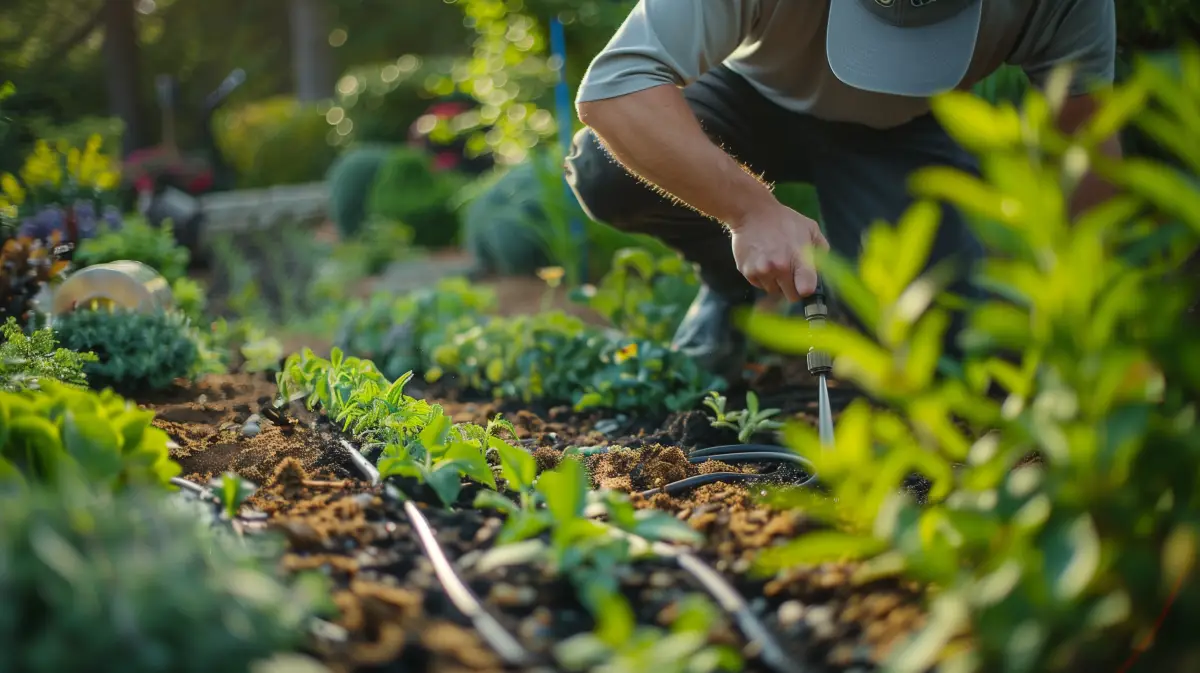Essential Tips for Installing, Repairing, and Adjusting Irrigation Systems

Maintaining a healthy and vibrant lawn or garden requires an efficient irrigation system. While DIY installation and repair are possible, the expertise of a professional service like Nature's Best in Nashville, TN, ensures optimal performance. Here’s a comprehensive guide to help you understand the basics and know when to call in the experts.
Installing an Irrigation System
1. Planning the Layout
- Assess Your Landscape: Evaluate your garden's shape and size to determine the most efficient irrigation layout.
- Choose the Right System: Select between drip irrigation and sprinkler systems based on your plant types and water needs.
2. Gathering Materials
- Essential Components: Purchase pipes, emitters, control valves, and a timer.
- Tools Needed: Have shovels, trenching tools, pipe cutters, and connectors ready.
3. Installation Steps
- Trenching: Dig trenches for laying pipes, ensuring they are deep enough to avoid damage.
- Laying Pipes: Connect pipes and install emitters or sprinkler heads as per your design.
- Testing the System: Turn on the system to check for leaks and ensure proper water distribution.
Tip: While installing an irrigation system can be a rewarding DIY project, it’s often best to hire professionals like Nature's Best to avoid potential issues and ensure efficiency.
Repairing an Irrigation System
1. Identifying Common Issues
- Leaks: Look for wet spots or pooling water.
- Clogged Emitters: Check if some plants are not getting enough water.
- Pressure Problems: Ensure uniform water flow to all parts of the garden.
2. DIY Repair Tips
- Fixing Leaks: Use repair clamps or replace damaged pipe sections.
- Unclogging Emitters: Clean or replace clogged emitters.
- Adjusting Pressure: Ensure the main valve is fully open and check for blockages.
Tip: Regular maintenance can prevent many issues. For persistent problems, calling Nature's Best ensures lasting solutions and system longevity.
Adjusting Your Irrigation System
1. Seasonal Adjustments
- Spring and Summer: Increase watering frequency and duration to meet higher evaporation rates.
- Fall and Winter: Reduce watering to avoid over-saturating the soil.
2. System Calibration
- Even Water Distribution: Adjust emitter placement and flow rates for uniform coverage.
- Timer Settings: Set timers to water during early mornings or late evenings to minimize evaporation.
3. Efficient Watering Practices
- Mulching: Use mulch to retain soil moisture and reduce the need for frequent watering.
- Zoning: Create irrigation zones to cater to different plant water needs effectively.
Tip: Professional services like Nature's Best can help optimize your system for maximum efficiency and water conservation.
Conclusion
Installing, repairing, and adjusting an irrigation system requires a good understanding of your garden's needs and the system’s mechanics. While DIY efforts can be fruitful, professional help from Nature's Best ensures your irrigation system is set up and maintained correctly, saving you time and ensuring a lush, healthy garden.
For expert installation, repair, or adjustment of your irrigation system, contact Nature's Best in Nashville, TN, today!


